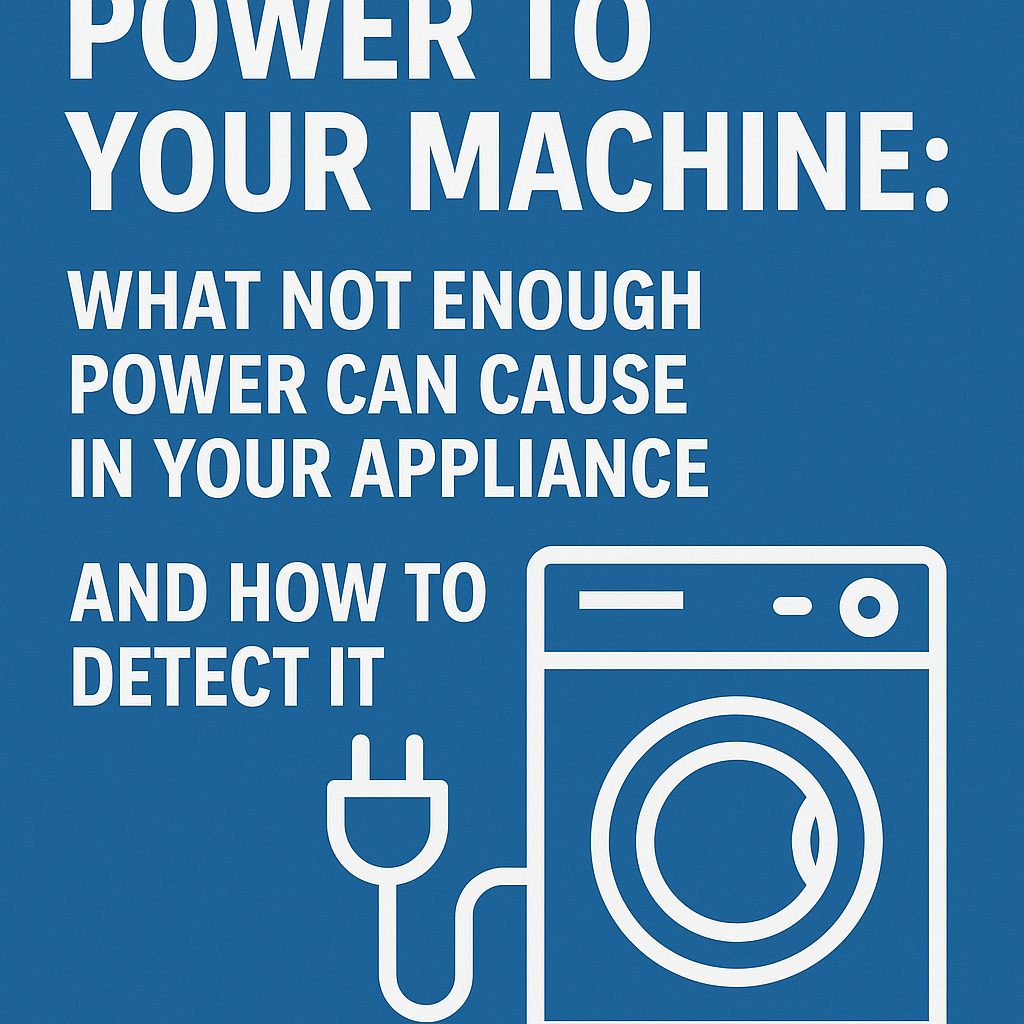
Power to Your Machine: What Happens When Your Appliance Isn’t Getting Enough Power—And How to Detect It
Share
By PRS Parts Inc.
Appliances like washing machines, refrigerators, and dryers rely on a consistent and adequate power supply to function correctly. When your appliance isn’t receiving enough power, the problems may show up as performance issues, error codes, or even complete failure to operate. Understanding these symptoms can help you catch electrical issues early and avoid costly damage.
Common Problems Caused by Low or Inconsistent Power
1. Failure to Start
One of the most obvious signs of a power issue is that the appliance simply won’t turn on. If the power supply is weak or inconsistent, internal components like control boards or motors won’t receive the voltage they need to activate.
2. Intermittent Operation
If your washing machine starts and then stops randomly, or your refrigerator’s compressor keeps clicking but never runs, power fluctuations could be to blame. These issues are often mistaken for faulty parts when the real issue lies with the power supply.
3. Error Codes or Flashing Lights
Modern appliances are built with diagnostic features. If they detect inconsistent voltage, they may display error codes related to motor, board, or sensor problems—even if those components are fine.
4. Unusual Noises or Overheating
Inadequate power can cause motors or compressors to strain, resulting in odd noises or even heat buildup. Prolonged operation under these conditions can wear out parts prematurely.
5. Incomplete Cycles or Functions
For washers, dryers, and dishwashers, low power can cause a cycle to stall or certain components (like pumps or heaters) to fail mid-cycle. This could lead to poor washing performance or wet clothes after a drying cycle.
How to Detect Power Issues in Your Appliance
✅ Check the Outlet
Use a voltage tester or plug in another high-draw device like a hairdryer to see if the outlet is delivering enough power. Some outlets may be weak or partially damaged.
✅ Inspect the Power Cord
Frayed or loosely connected power cords can disrupt the voltage flow. Always inspect cords for wear, heat damage, or loose prongs.
✅ Listen for Buzzing or Clicking
Noises like humming or repetitive clicking without function often signal a low-power issue affecting a compressor, relay, or motor.
✅ Check for Flickering Lights or Dim Display Panels
These subtle signs often indicate that your appliance isn't getting full power.
✅ Use a Multimeter
Measure the voltage at the outlet or where it enters the appliance. Most large appliances in the U.S. should get 120V (for smaller units) or 240V (for dryers, ovens, etc.).
What You Should Do
-
Unplug the appliance and avoid continued use until the issue is diagnosed.
-
Call an electrician if you suspect the problem is with your home’s wiring or outlets.
-
Check internal fuses or consult a technician to test the control board and other components for damage.
-
Replace damaged power cords or connectors as soon as possible with OEM parts.
At PRS Parts Inc., we carry OEM power cords, fuses, and electrical components for all major appliance brands. Whether you're troubleshooting a washer that won’t spin or a dryer that keeps turning off, we’re here to help you diagnose the problem and get the part you need.
Visit PRS Parts Inc. at 540 Lagoon Dr. for authentic appliance replacement parts and expert repair assistance.
Fix it right the first time—with service delivered in the spirit of aloha.
